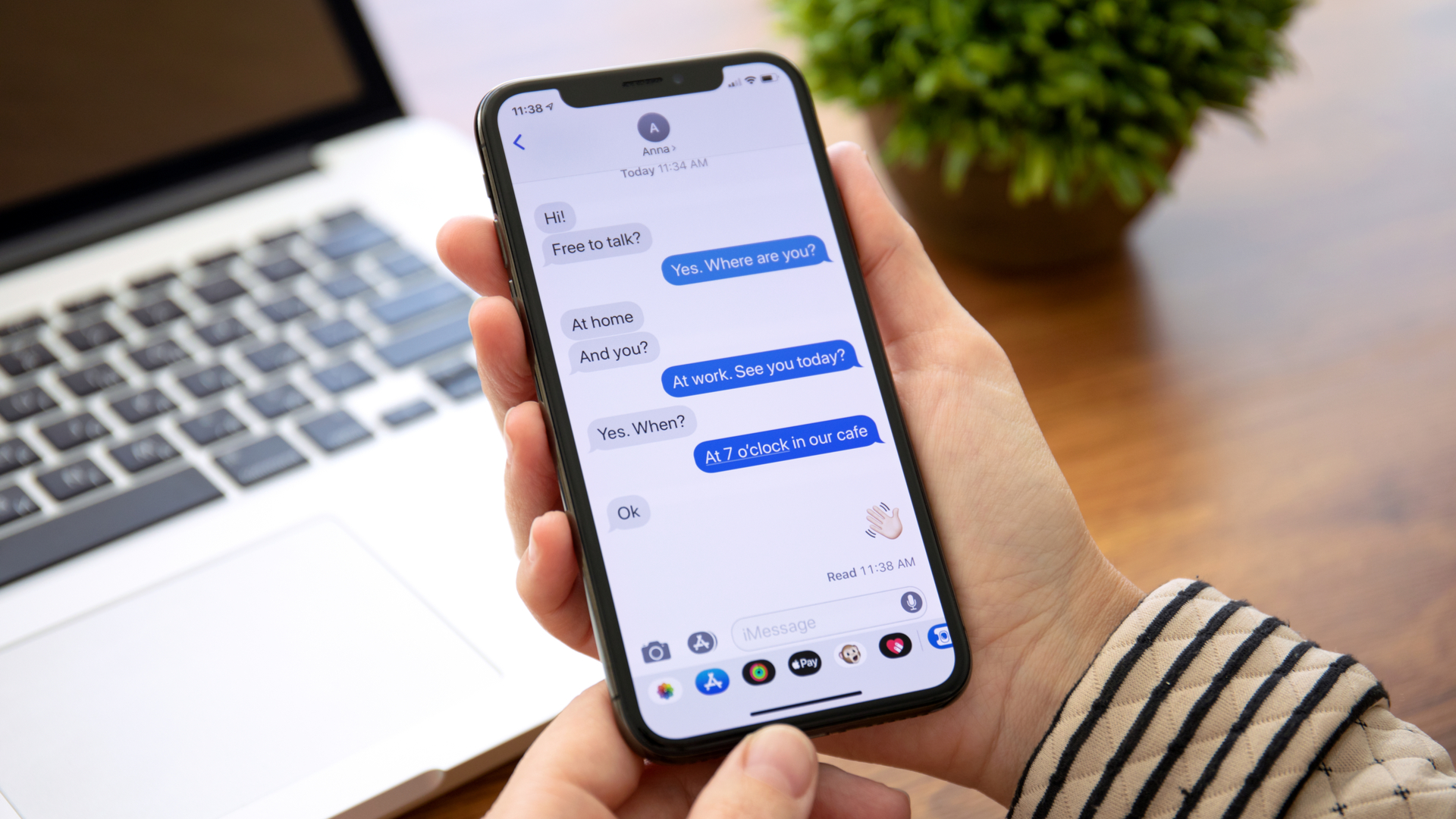Researcher discovers hidden iOS 14 ‘BlastDoor’ security mechanism
This protective layer sandboxes incoming iMessages to protect users from malicious texts


The latest iteration of Apple’s flagship iPhone operating system, iOS 14, was shipped with a previously undisclosed security mechanism that comprises major changes to the way incoming iMessage texts are processed.
With iOS 14, Apple has introduced BlastDoor, which serves as a sandboxing service for all incoming iMessage data, according to Google’s Project Zero researcher Samuel Groß. This hadn't been previously disclosed by Apple, and the tool was only discovered after reverse-engineering the operating system.
BlastDoor aims to safeguard iPhone users against a common form of attack which involves malicious payloads being sent through iMessage texts. Hackers have, in the past, exploited iMessage vulnerabilities to launch remote code execution attacks and take control of iPhones by simply sending a text to a victim’s device.
This sandboxing layer has been designed specifically to combat this threat by executing any incoming code in an isolated environment, away from the rest of the operating system. This means malicious payloads can be identified and removed before the user interacts with the message.
Although several sandboxing mechanisms already exist in iOS, BlastDoor is one that specifically operates with the iMessage app. It’s also written in Swift, which is considered a memory safe language, making it harder to introduce classic memory corruption vulnerabilities into the codebase.
The Great iPwn, disclosed by Citizen Lab in December 2020, is a recent example of a series of attacks that exploited such weaknesses in iMessage. The report revealed that government operatives using the NSO Group’s infamous Pegasus spyware were found to have hacked 36 personal phones belonging to Al Jazeera journalists.
The operatives deployed an invisible zero-click exploit in iMessage to conduct their attacks, but the report also claimed the attacks wouldn’t work against devices with iOS 14 due to undefined “new security protections”.
Sign up today and you will receive a free copy of our Future Focus 2025 report - the leading guidance on AI, cybersecurity and other IT challenges as per 700+ senior executives
This prompted Project Zero’s Groß to reverse-engineer iOS 14 in order to establish the precise nature of any new security mechanisms. Beyond BlastDoor, it was also found that Apple had added a set of technical structural changes, including exponential throttling between restarts, to make it even harder for hackers to breach devices.
“Overall, these changes are probably very close to the best that could’ve been done given the need for backwards compatibility, and they should have a significant impact on the security of iMessage and the platform as a whole,” Groß said.
“It’s great to see Apple putting aside the resources for these kinds of large refactorings to improve end-users’ security. Furthermore, these changes also highlight the value of offensive security work: not just single bugs were fixed, but instead structural improvements were made based on insights gained from exploit development work.”

Keumars Afifi-Sabet is a writer and editor that specialises in public sector, cyber security, and cloud computing. He first joined ITPro as a staff writer in April 2018 and eventually became its Features Editor. Although a regular contributor to other tech sites in the past, these days you will find Keumars on LiveScience, where he runs its Technology section.
-
 Trump's AI executive order could leave US in a 'regulatory vacuum'
Trump's AI executive order could leave US in a 'regulatory vacuum'News Citing a "patchwork of 50 different regulatory regimes" and "ideological bias", President Trump wants rules to be set at a federal level
-
 TPUs: Google's home advantage
TPUs: Google's home advantageITPro Podcast How does TPU v7 stack up against Nvidia's latest chips – and can Google scale AI using only its own supply?
-
 Blackpoint Cyber and NinjaOne partner to bolster MSP cybersecurity
Blackpoint Cyber and NinjaOne partner to bolster MSP cybersecurityNews The collaboration combines Blackpoint Cyber’s MDR expertise with NinjaOne’s automated endpoint management platform
-
 Busting nine myths about file-based threats
Busting nine myths about file-based threatsWhitepaper Distinguish the difference between fact and fiction when it comes to preventing file-based threats
-
 The Total Economic Impact™ of the Intel vPro® Platform as an endpoint standard
The Total Economic Impact™ of the Intel vPro® Platform as an endpoint standardWhitepaper Cost savings and business benefits enabled by the Intel vPro® Platform as an endpotnt standard
-
 The Total Economic Impact™ of IBM Security MaaS360 with Watson
The Total Economic Impact™ of IBM Security MaaS360 with WatsonWhitepaper Cost savings and business benefits enabled by MaaS360
-
 WithSecure Elements EPP and EDR review: Endpoint protection on a plate
WithSecure Elements EPP and EDR review: Endpoint protection on a plateReviews An affordable cloud-managed solution with smart automated remediation services
-
 KuppingerCole leadership compass report - Unified endpoint management (UEM) 2023
KuppingerCole leadership compass report - Unified endpoint management (UEM) 2023Whitepaper Get an updated overview of vendors and their product offerings in the UEM market.
-
 The Total Economic Impact™ of IBM Security MaaS360 with Watson
The Total Economic Impact™ of IBM Security MaaS360 with WatsonWhitepaper Get a framework to evaluate the potential financial impact of the MaaS360 on your organization
-
 Unified endpoint management software vendor assessment
Unified endpoint management software vendor assessmentWhitepaper Make positive steps on your intelligent automation journey